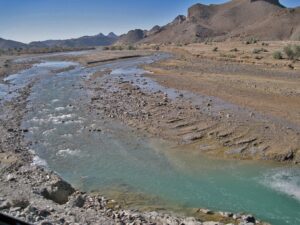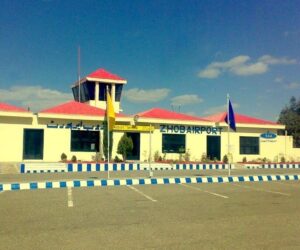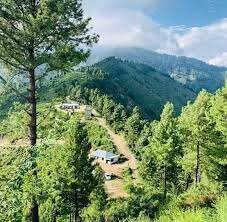Zhob
Zhob has the meaning of “flowing water”. Zhob is a name of a city, a district, a river, and a division.

Zhob’s old name was Sandeman. It was changed into Zhob in 1972. Zhob is the second-largest city in Balochistan in terms of area and population after Quetta.
Key information about Zhob city
| Attribute | Details |
|---|---|
| Name | Zhob |
| Location | Balochistan, Pakistan |
| Coordinates | 31.3417° N, 69.4482° E |
| Population | Approximately 160,000 (estimate) |
| Climate | Arid climate with hot summers and cold winters |
| Elevation | Around 1,524 meters (5,000 feet) above sea level |
| Language | Predominantly Pashto, with some Balochi and Urdu |
| Major Industries | Agriculture, Livestock, Trade |
| Historical Significance | Zhob has a rich history, with evidence of ancient civilizations in the region. It has been a crossroads for various cultures over the centuries. |
| Transportation | Connected by road; Zhob Airport for air travel |
| Landmarks | – Fort Sandeman: Historical fort in the city |
| – Zhob Valley: Scenic natural landscapes | |
| Education | Several schools and colleges, with limited higher education facilities |
| Local Cuisine | Traditional Pashtun and Balochi dishes, including chapli kebabs and sajji |
| Notable Events | Zhob Festival, celebrating local culture and traditions |
| Challenges | Limited access to education and healthcare facilities, water scarcity |
Zhob city is surrounded by Stony Mountains and Two high mountains divide this city in the center. Southside has a bazaar and residential area while the north has a cantonment. That’s why it is prominent among the other cities of Balochistan.
Furnished from the furniture of the Victorian era, Zhob Jirga Hall is a center of political, literary, and social activities. The length of river Zhob is 410 km and it flows towards the north.

The seashores of river Zhob are always crowded with tourists throughout the year.
Airport, Company Garden, and Shahna Garden enhances the beauty of this city. Silyaza canal flows a few kilometers away from Zhob. A dam is constructed there.
The orchards of grapes, apples, apricot, and peach around the dam intensify the beauty of this place. The archeological remains and old caves are also there which were discovered by Seroral Sign.
Sheen Gar

Transport is available for Sheen Gar from the Zhob Bus stand. About 2.5 hours of drive, the coldest area of Sheen Gar starts. This area has woods of Chilgoza pine tree.
A small rest house is located on the top of Sheen gar. This beautiful area is full of wild animals and plants. Former president Ayub Khan used to come there for hunting. The moments spend here are unforgettable.
Exploring Zhob, Balochistan
Location and Landscape
Situated at coordinates 31.3417° N latitude and 69.4482° E longitude, Zhob enjoys an elevated position of around 1,524 meters (5,000 feet) above sea level. The city is enveloped by a rugged terrain, contributing to its distinct character. The Zhob Valley, with its picturesque vistas, adds a touch of natural beauty to the region.
Zhob Culture
Zhob is a cultural mosaic, where traditions are woven into the fabric of everyday life. Influenced predominantly by Pashto and Balochi cultures, the city exudes warmth and hospitality. Visitors are often captivated by the vibrant bazaars where the rhythm of daily life beats to the tune of local craftsmanship, delicious street food, and the distinctive blend of languages spoken by the diverse community.
The annual Zhob Festival stands out as a celebration of cultural heritage. Music, dance, and traditional rituals come to life during this event, attracting locals and tourists alike. It’s a unique opportunity to witness the lively spirit that defines Zhob’s cultural identity.
Zhob River
The Zhob River gracefully meanders through the city, bestowing its surroundings with natural beauty and tranquility. Residents and visitors often find solace along the riverbanks, where they can revel in the peaceful ambiance or take a leisurely stroll amidst the lush greenery.
The Zhob River not only adds scenic charm to the city but also plays a vital role in sustaining the local agriculture. Its waters are harnessed for irrigation, supporting the cultivation of crops and the livelihoods of many in this arid region.
Zhob Airport
Zhob Airport serves as a pivotal hub for air travel in the region, connecting this remote city with the broader national and international network. Despite its relatively modest size, the airport plays a crucial role in facilitating travel for the residents of Zhob and nearby areas.
The airport’s significance extends beyond its physical infrastructure. It symbolizes the city’s openness to the world, fostering economic opportunities, tourism, and cultural exchange. For Zhob, the airport is not just a transport hub but a gateway that links the city to the global tapestry.
Economic Pillars
The economy of Zhob revolves around agriculture and livestock, with trade playing a significant role. The city’s arid climate poses challenges, but the resilient community has adapted, engaging in activities like farming and herding. Traditional markets bustle with activity, offering a glimpse into the vibrant local trade.
Challenges and Growth
While Zhob boasts cultural richness, a serene river, and an essential air travel link, it also faces challenges typical of many regions. Access to quality education and healthcare remains a concern, and sustainable development initiatives are essential for the city’s future prosperity.
As Zhob navigates the delicate balance between preserving its cultural heritage and embracing modernization, the city represents a microcosm of the challenges and opportunities facing many regions in Pakistan and around the world.
Schools
- Government Boys High School Zhob
- Government Girls High School Zhob
- The Educators Zhob Campus
- Quaid-e-Azam Public School Zhob
Colleges
- Government Degree College Zhob
- Balochistan Residential College Zhob
- Government Girls Degree College Zhob
Hospitals
- District Headquarters Hospital Zhob
- Civil Hospital Zhob
- Al-Syed Hospital Zhob
Restaurants
- Kabul Restaurant
- Al-Habib Restaurant
- City Restaurant Zhob
- Quetta Restaurant Zhob
Frequently Asked Questions (FAQ)
Where is Zhob located?
Zhob is situated in the Balochistan province of Pakistan. Its geographical coordinates are approximately 31.3417° N latitude and 69.4482° E longitude.
What is the population of Zhob?
As of the last available estimate, Zhob has a population of approximately 160,000 people. Population figures may vary over time.
What is the climate like in Zhob?
Zhob experiences an arid climate with hot summers and cold winters. The temperature can vary significantly between seasons.
Which languages are spoken in Zhob?
The primary languages spoken in Zhob are Pashto, Balochi, and Urdu.
Are there any notable landmarks in Zhob?
Yes, Zhob is home to Fort Sandeman, a historical fort that holds significance in the city’s history. The Zhob Valley, known for its scenic beauty, is also a notable landmark.
What are the major industries in Zhob?
Agriculture and livestock are significant contributors to Zhob’s economy. Trade also plays a crucial role in the city’s economic activities.
Are there educational institutions in Zhob?
Yes, Zhob has various schools and colleges. Notable ones include Government Degree College Zhob, Balochistan Residential College Zhob, and several others.
Tell me about healthcare facilities in Zhob.
Zhob has hospitals such as District Headquarters Hospital and Civil Hospital, providing healthcare services to the local population.
Is there an airport in Zhob?
Yes, Zhob has an airport, known as Zhob Airport. It serves as a vital air travel hub, connecting the city with other regions.
What is the Zhob Festival?
The Zhob Festival is an annual celebration that showcases the cultural heritage of the city. It typically includes music, dance, and traditional rituals.
What is the significance of Zhob River?
Zhob River flows through the city, providing a scenic backdrop and playing a crucial role in supporting local agriculture through irrigation.
What are the culinary specialties in Zhob?
Traditional Pashtun and Balochi dishes, including chapli kebabs and sajji, are popular in Zhob. Various local restaurants offer these delicacies.
What challenges does Zhob face?
Like many regions, Zhob faces challenges such as limited access to education and healthcare facilities. Sustainable development is a key focus for addressing these issues.
Can tourists visit Zhob?
Yes, tourists can visit Zhob to explore its historical landmarks, natural beauty, and experience the local culture during events like the Zhob Festival.
Wind Up Lines
In conclusion, Zhob, Balochistan, encapsulates the spirit of a city where tradition meets modernity, where the Zhob River weaves a tale of natural beauty, and where the airport serves as a bridge to the wider world. Exploring Zhob is an invitation to discover a unique blend of cultural vibrancy, riverside serenity, and the aspirations of a community striving for a brighter future.
